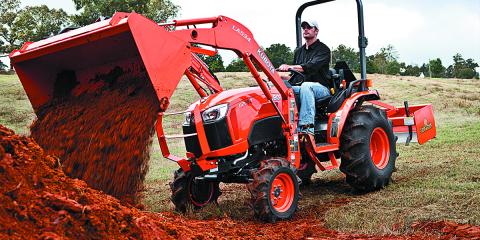Your web browser is out of date.
Please download one of these free, up-to-date browsers for the best experience on our site

Spring brings warmer temperatures and the start of the farming season. If you had your tractor stored away or inactive for some time, it could have seized up or not perform as it should when it’s time to use it. Before putting your tractors to heavy work, it’s essential to complete the following checks to ensure they’ll perform up to par.
Start by inspecting the implements, attachments, and equipment body, and look for signs of damage like cracks and missing pieces. Check the tires for worn treads or torn rubber, but don’t forget to monitor pressure and inflate them correctly.

After giving the exteriors a once-over, turn your attention to the engine. Test the battery for charge and check the ignition and wiring system. It’s not unusual to spot frayed or chewed wires, especially if your tractors became a temporary home for rodents. Have a look at the brakes, differential, and transmission. If you think something’s off, bring in a professional to diagnose and fix it.
During your inspection, you may come across broken or nearly failing parts, such as belts, rubber hoses, pulleys, bearings, and fans. You should replace them before they cause more headaches down the road. It’s crucial to change all the filters, including air, oil, and hydraulic, at least once a year, even if they still look undamaged or relatively clean. Doing so prevents them from clogging up over time and obstructing the proper flow of air or fluids, which can often lead to costly repairs.
For idle or stored tractors, it’s better to drain the fuel stored and replace it with something fresh, unless you’ve added stabilizer. Even with a tight sealing, contaminants can still make their way inside in the tank and other fluid containers. Check the condition of fluids first before topping off or replacing them altogether. If there’s a significant drop in levels, look for signs of leaks or damage on a sealed system like the transmission. Lastly, make sure to lubricate components where needed.